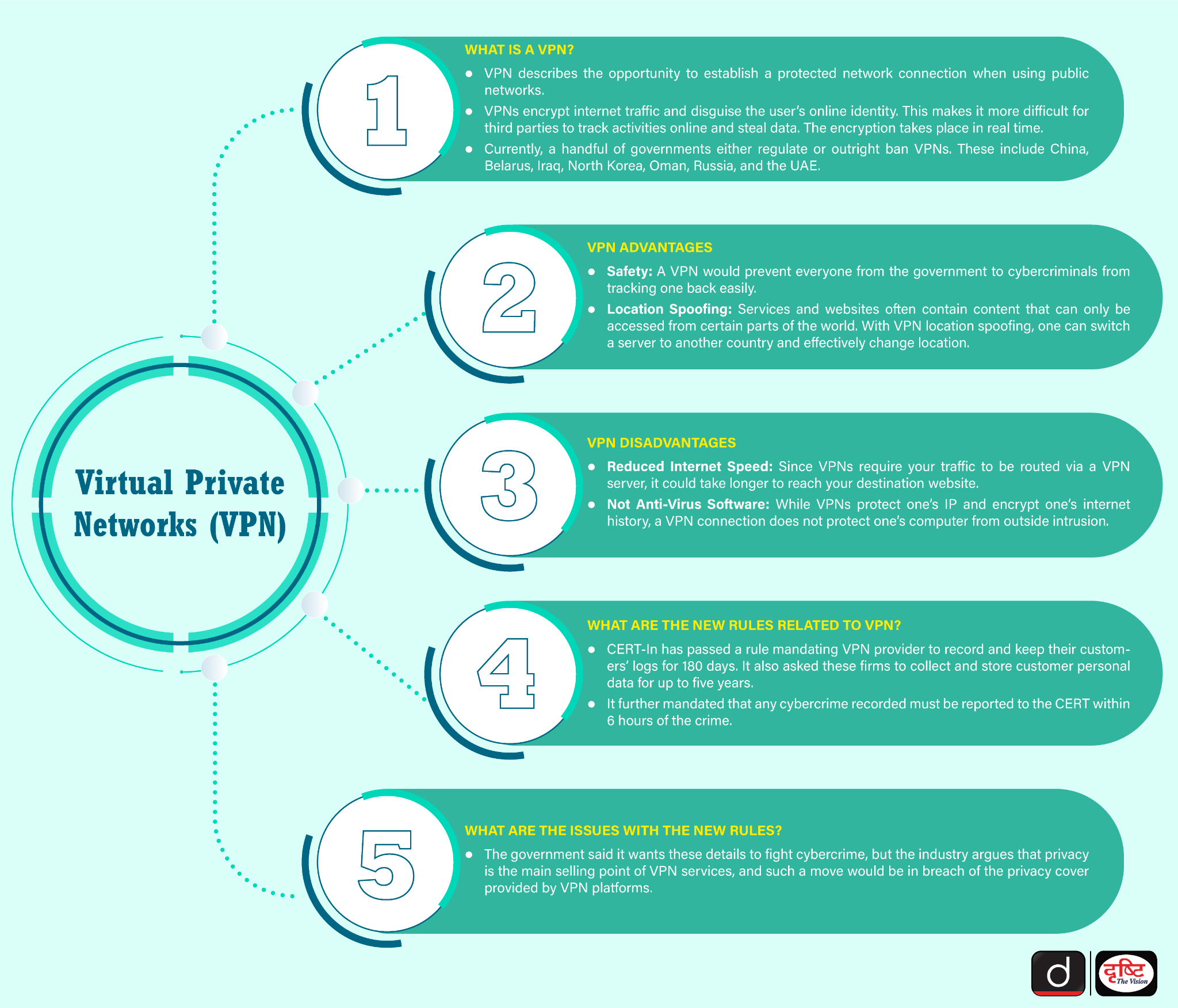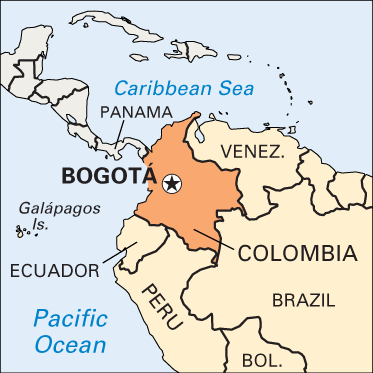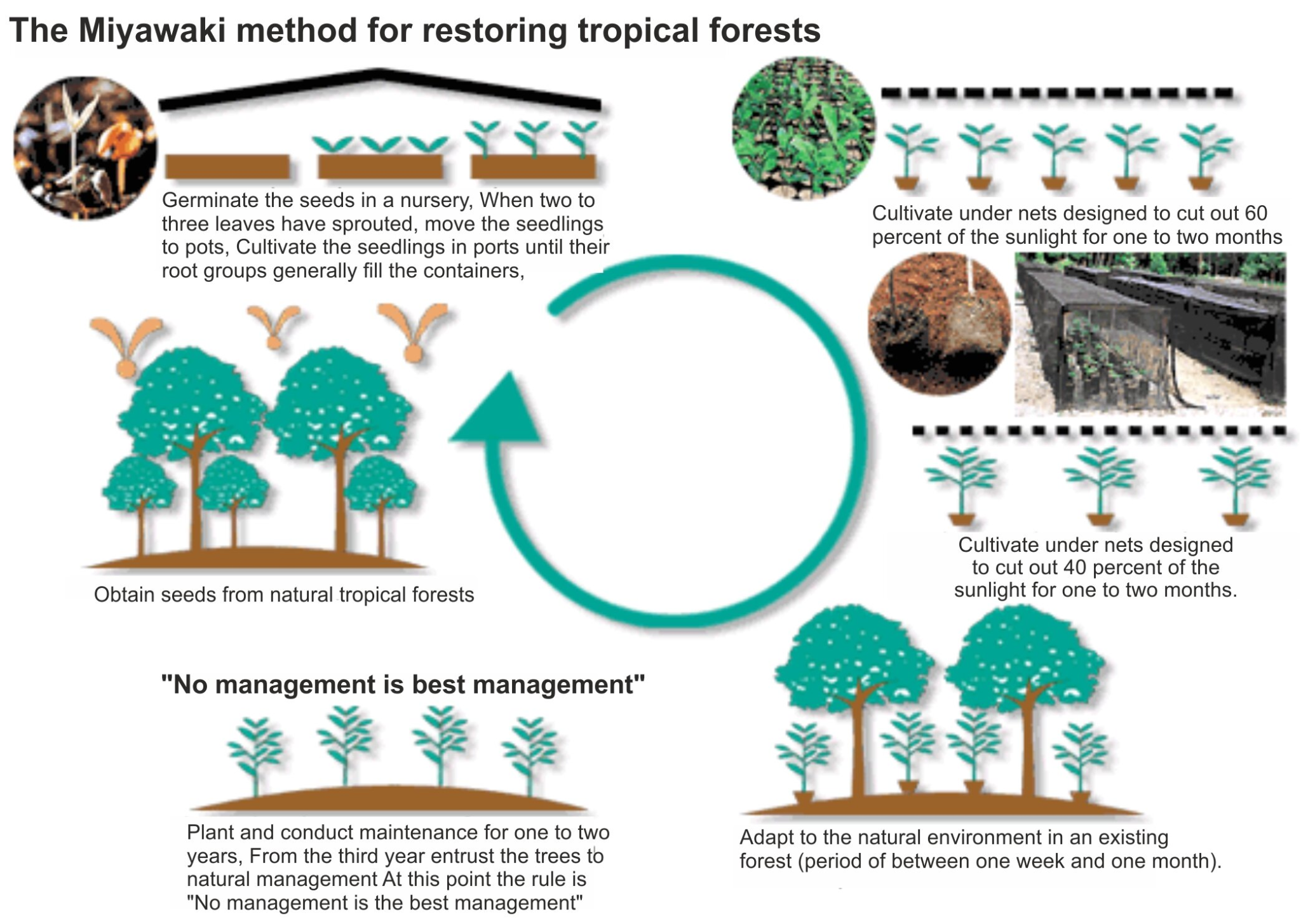Governance
SC Upholds EVM and VVPAT System
For Prelims: Electronic voting machine, Voter verifiable paper audit trail, Election Commission of India, Subramanian Swamy v. Election Commission of India, Representation of the People Act,1951, Dinesh Goswami Committee
For Mains: Electoral Reforms in India, Transparency in Elections.
Why in News?
Recently, the Supreme Court in the Association of Democratic Reforms v. Election Commission of India Case, 2024, upheld the electronic voting machine (EVM) system, rejecting a return to paper ballots. Also, the Court rejected the request for 100% cross-verification of EVM votes with Voter verifiable paper audit trail (VVPAT) slips, maintaining the current random 5% verification in Assembly constituencies.
- However, the Court issued a series of directions to the Election Commission of India (ECI) to strengthen the existing system.
What is the Supreme Court’s Current Observation on EVM and VVPATs?
- Insufficient Evidence to Question Polling System: The Court, drawing from a range of legal precedents, emphasised that there is insufficient evidence to question the current polling system, particularly after the implementation of VVPATs.
- In the 2013 case of Subramanian Swamy v. Election Commission of India, the Court declared that a paper trail is essential for ensuring fair elections.
- Subsequently, in 2019, when addressing a petition advocating for a 50% cross-verification of EVM votes with VVPAT slips in each Assembly constituency, the Court favoured increasing the number of polling stations conducting VVPAT verification from 1 per Assembly constituency to 5.
- Neutrality of EVM Microcontrollers: SC observed that the microcontrollers programmed separately by EVM manufacturers are neutral, as they do not favour any political party or candidate but only record the buttons pressed by voters.
- SC also pointed out that any unauthorised attempt to access the EVM's microcontroller or memory triggers the Unauthorized Access Detection Mechanism (UADM), rendering the EVM permanently disabled.
- Security Measures in EVMs: Highlighting the security measures, the court noted that the program installed in the EVMs is securely hashed and burned into a One Time Programmable microcontroller chip during manufacturing, eliminating any possibility of tampering.
- Additionally, all three units of the EVM – the ballot unit, control unit, and VVPAT – have microcontrollers with firmware that cannot be altered after delivery to the ECI by the manufacturer.
How EVMs and VVPAT were Introduced in India?
- 1977-1979: The idea of EVM was conceived in 1977 and a prototype was developed by Electronics Corporation of India Ltd (ECIL), Hyderabad, in 1979.
- 1980: The Election Commission demonstrated an EVM on 6th August 1980. After consensus on its use, the ECI issued directives under Article 324 for the use of EVMs.
- 1982: EVMs were used in 50 polling stations during elections in the Parur seat of Kerala. The Supreme Court ruled against the legality of EVMs' use.
- 1988: A section of the Representation of the People Act, 1951 was amended in december 1988 and a new section, 61A, was included in the law, empowering the EC to use EVMs. The amendment came into force on 15th March 1989.
- 1990: An Electoral Reforms Committee under Dinesh Goswami was constituted, which recommends a technical examination of EVMs. The Technical Expert Committee recommended EVMs "without any further loss of time marking it technically sound, secure and transparent".
- 1998: EVMs were used in 16 Assembly elections across Madhya Pradesh, Rajasthan and New Delhi.
- 2001: State assembly elections in Tamil Nadu, Kerala, Puducherry, and West Bengal were completely conducted using EVMs. All state assembly elections thereafter witnessed the use of this machine
- 2004: EVMs were used in all 543 constituencies of Lok Sabha elections.
- 2013: Amendment to the Conduct of Election Rules, 1961 introduced the use of Voter Verifiable Paper Audit Trail (VVPAT) machines. Used in the by-election for the Noksen assembly seat in Nagaland.
- 2019: First Lok Sabha election in which EVM was fully backed by a VVPAT EVM.
Note:
- The paper ballot system is a traditional voting method where voters mark their choices on physical paper ballots, which are then manually counted by election officials to determine the results.
- This system is transparent but can be time-consuming and prone to errors during counting.
How is EVM better than the Paper Ballot System?
- Accuracy and Reduced Errors: EVMs eliminate the possibility of human errors such as miscounting, double voting, or invalid votes due to unclear markings.
- The digital nature of EVMs ensures precise tabulation of votes, leading to more accurate election results compared to manual counting.
- Faster Counting and Results: EVMs significantly reduce the time required for vote counting as compared to traditional paper ballots, allowing for quicker declaration of election outcomes.
- This swift counting process helps in minimising uncertainties and delays associated with manual counting methods.
- Environmentally Friendly: EVMs contribute to environmental sustainability by reducing paper usage, thus lowering the environmental impact associated with printing and managing large quantities of paper ballots.
- The shift towards electronic voting aligns with global efforts to promote eco-friendly practices in electoral processes.
- Enhanced Security Measures: EVMs incorporate advanced security features such as encryption, secure booting, and tamper detection mechanisms, making them less susceptible to tampering or fraud which is very likely in paper ballot systems through booth capturing, pouring ink into ballots and ballot box stuffing.
- The digital encryption of votes ensures the integrity and confidentiality of the electoral process, enhancing overall security and trust in election outcomes.
Read more: Electoral Reforms in India
|
Drishti Mains Question: How do Electronic Voting Machines (EVMs) and Voter Verified Paper Audit Trail (VVPAT) systems enhance transparency in the electoral process? Discuss the significance and challenges related to these technologies in promoting public trust and confidence in election results. |
UPSC Civil Services Examination Previous Year Questions (PYQ)
Prelims:
Q.1 Consider the following statements: (2017)
- The Election Commission of India is a five-member body.
- The Union Ministry of Home Affairs decides the election schedule for the conduct of both general elections and bye-elections.
- Election Commission resolves the disputes relating to splits/mergers of recognised political parties.
Which of the statements given above is/are correct?
(a) 1 and 2 only
(b) 2 only
(c) 2 and 3 only
(d) 3 only
Ans: (d)
Mains:
Q.1 To enhance the quality of democracy in India the Election Commission of India has proposed electoral reforms in 2016. What are the suggested reforms and how far are they significant to make democracy successful? (2017)
Biodiversity & Environment
NABARD's Climate Strategy 2030
For Prelims: National Bank for Agriculture and Rural Development , Green financing, Greenwashing, Solar-powered irrigation, Climate-smart agriculture
For Mains: NABARD’s Climate Strategy, Challenges Related to Green Financing
Why in News?
Recently, National Bank for Agriculture and Rural Development (NABARD) unveiled its Climate Strategy 2030 document which aims to address India’s need for green financing.
What is NABARD’s Climate Strategy?
- About: NABARD's Climate Strategy 2030 is structured around four key pillars:
- Accelerating Green Lending: Focusing on increasing green financing across various sectors.
- Market-Making Role: Playing a broader role in creating a conducive market environment for green finance.
- Internal Green Transformation: Implementing sustainable practices within NABARD's operations.
- Strategic Resource Mobilisation: Mobilising resources effectively to support green initiatives.
- Objective: This strategy is designed to tackle the financial gap between the required investment for sustainable initiatives and the current inflow of green finance.
- India requires approximately USD 170 billion annually by 2030, aiming for a cumulative total of over USD 2.5 trillion.
- However, current green finance inflows are critically insufficient, with only about USD 49 billion garnered as of 2019-20.
- Also, the majority of funds in India are earmarked for mitigation efforts, with only USD 5 billion allocated towards adaptation and resilience.
- This reflects minimal private sector engagement in these areas due to challenges in bankability and commercial viability.
Note:
- NABARD is the apex development bank focusing on rural sector finance in India.
- Established in 1982 under the National Bank for Agriculture and Rural Development Act, it provides financial support for agriculture, small industries, cottage industries, and rural projects as mandated by Parliament.
- It is headquartered in Mumbai.
What is Green Financing?
- About: Green financing refers to the mobilisation of financial resources to support investments that have a positive environmental impact.
- These investments can range from renewable energy projects and energy efficiency initiatives to sustainable infrastructure development and climate-smart agriculture.
- Significance: The traditional financial system often prioritises short-term profits over long-term environmental sustainability. Green financing aims to bridge this gap by:
- Facilitating the Transition to a Low-carbon Economy: By channelling funds towards renewable energy and clean technologies, green financing helps reduce reliance on fossil fuels and mitigate greenhouse gas emissions.
- Promoting Climate Adaptation and Resilience: Investments in green infrastructure like flood defences and early warning systems can help communities adapt to the changing climate and reduce the impact of natural disasters.
- Unlocking New Economic Opportunities: The shift towards a green economy creates new markets for clean technologies and sustainable practices, stimulating innovation and job creation.
- Challenges Related to Green Financing:
- High Initial Costs: Green projects often require higher initial investments compared to conventional projects, which can deter investors despite long-term cost savings and environmental benefits.
- Mismatched Timeframes: Green projects often have longer payback periods and may not align with short-term investment horizons or financial targets of investors and financial institutions.
- Lack of Standardisation and Greenwashing: The absence of globally accepted standards for green investment leads to ambiguity and inconsistency in evaluating their environmental impact and financial performance.
- Also, without clear and standardised criteria, there is a risk of greenwashing, where investments are misrepresented as environmentally friendly without delivering substantial sustainability benefits.
How Green Financing Can be Improved?
- AI-powered Risk Assessment for Green Projects: Developing AI algorithms that can assess the environmental and financial risks associated with green projects with greater accuracy and efficiency.
- This can encourage traditional financial institutions to participate in green financing.
- Satellite Data-driven Sustainable Investment Decisions: Leverage satellite imagery and data analytics to assess the environmental impact of potential investments in areas like deforestation or sustainable agriculture, providing investors with data-driven insights.
- Green Infrastructure Bonds with Government Guarantees: Developing green infrastructure bonds with partial government guarantees to mitigate risk for private investors and incentivise participation in large-scale sustainable infrastructure projects.
- Micro-grants for Grassroots Green Initiatives: Establishing micro-grant programs to support local communities in developing and implementing small-scale green projects like rainwater harvesting, solar-powered irrigation, or community composting initiatives.
- Green Impact Scores for Financial Products: Implementing a system where financial products earn "green impact scores" based on their environmental footprint. This allows consumers to make informed choices and prioritise green options.
|
Drishti Mains Question: Discuss innovative methods for promoting green financing in the context of sustainable development to facilitate the transition towards a greener economy? |
UPSC Civil Services Examination, Previous Year Questions (PYQs)
Mains
Q. Explain the purpose of the Green Grid Initiative launched at the World Leaders Summit of the COP26 UN Climate Change Conference in Glasgow in November 2021. When was this idea first floated in the International Solar Alliance (ISA)? (2021)


Agriculture
FSSAI Raises Pesticide Limits in Herbs and Spices
For Prelims: Food Safety Standards Authority of India (FSSAI), Pesticide Poisoning, Codex Alimentarius, Food Safety and Standards Act, 2006, State Food Safety Index.
For Mains: Threat of pesticide poisoning, FSSAI mandate and its working in ensuring food safety.
Why in News?
The recent decision of the Food Safety Standards Authority of India (FSSAI) to raise the maximum residue limit (MRL) of pesticides has sparked outrage from activists and scientists due to potential health risks and trade implications.
- The FSSAI order increased the maximum residue limit (MRL) of pesticides allowed in herbs and spices by tenfold, from 0.01 mg/kg to 0.1 mg/kg.
What is the Issue Regarding the FSSAI Order?
- Inconsistencies in FSSAI's Previous Stance:
- The FSSAI's order contradicts its own previous stance. In April 2022, the authority acknowledged the lack of field trial data for most Indian pesticides and advocated using Maximum Residue Limits (MRLs) established by Codex Alimentarius.
- However, the latest order deviates from this approach for spices and herbs.
- The FSSAI's order contradicts its own previous stance. In April 2022, the authority acknowledged the lack of field trial data for most Indian pesticides and advocated using Maximum Residue Limits (MRLs) established by Codex Alimentarius.
- Data Transparency and Reliability:
- The maximum residue limit (MRL) of pesticides for food and commodities, including spices and culinary herbs, is specified under the Food Safety and Standards (Contaminants, Toxins and Residues) Regulation, 2011, based on field trial data received through the Central Insecticides Board and Registration Committee (CIBRC), Union Ministry of Agriculture and Family Welfare.
- But there is an issue of conflict of interest as these studies often come from the pesticide companies themselves.
- The Centre's Monitoring of Pesticide Residues at the National Level (MPRNL) checks the amount of pesticide in our food, but it does not test spices and lacks comprehensive data.
- The maximum residue limit (MRL) of pesticides for food and commodities, including spices and culinary herbs, is specified under the Food Safety and Standards (Contaminants, Toxins and Residues) Regulation, 2011, based on field trial data received through the Central Insecticides Board and Registration Committee (CIBRC), Union Ministry of Agriculture and Family Welfare.
- Impact on Consumers and Trade:
- Countries with stricter pesticide regulations like Europe, have rejected Indian products exceeding their MRLs, as exemplified by recent recalls of Indian food products containing excessive pesticide residues.
- E.g. In April 2024, few popular spices firms in India, have been banned in Singapore and Hong Kong for allegedly containing the pesticide 'ethylene oxide' beyond permissible limits.
- Ethylene Oxide is a harmful pesticide unfit for human consumption and whose long-term exposure can cause cancer.
What is Pesticide Poisoning?
- About :
- Pesticide is any chemical or biological substance intended to prevent, destroy or control damage from pests which has both agricultural and non-agricultural uses.
- They also pose serious risks to human health and the environment, especially when they are misused, overused, or sold illegally.
- Pesticide Regulation in India:
- Pesticides are regulated under the Insecticides Act, 1968 and the Insecticides Rules, 1971.
- The Insecticides Act of 1968 covers the registration, manufacture and sale of pesticides in India.
- The Act is administered by the Department of Agriculture and Farmers Welfare, Ministry of Agriculture and Farmers Welfare.
- Pesticides are regulated under the Insecticides Act, 1968 and the Insecticides Rules, 1971.
- Types of Pesticides:
- Insecticides: The chemicals that are used to protect plants from insects and pests are known as Insecticides.
- Fungicides: This class of crop protection chemicals is used to control the spread of fungal diseases in plants.
- Herbicides: Herbicides are chemicals that kill or control the growth of weeds in the cultivation area.
- Bio-Pesticides: They are pesticides of biological origin, i.e., derived from animals, plants, bacteria etc.
- Others: This includes plant growth regulators, nematicides, rodenticides and fumigants.
- Concept of Pesticide Poisoning:
- Pesticide poisoning is a term that refers to the adverse effects of exposure to pesticides on humans or animals.
- Pesticide exposure can cause adverse health effects including cancer, effects on reproduction, and immune or nervous systems.
- According to the World Health Organization (WHO), pesticide poisoning is one of the leading causes of death among agricultural workers worldwide.
- Types of Pesticide Poisoning:
- Acute poisoning occurs when a person ingests, inhales, or comes into contact with a large amount of pesticide in a short period.
- Chronic poisoning occurs when a person is exposed to low doses of pesticide over a long period, which can cause damage to various organs and systems in the body.
What is the Food Safety and Standards Authority of India?
- About:
- The Food Safety and Standards Authority of India (FSSAI) is a statutory body formed under the Food Safety and Standards Act, 2006.
- The Food Safety and Standards Act, 2006 replaced acts like the Prevention of Food Adulteration Act,1954, Fruit Products Order, 1955, Meat Food Products Order, 1973.
- It operates under the Union Ministry of Health and Family Welfare.
- The Food Safety and Standards Authority of India (FSSAI) is a statutory body formed under the Food Safety and Standards Act, 2006.
- Mandate:
- The FSSAI has the mandate of regulating the manufacture, storage, distribution, sale, and import of food articles, and also establishing standards to ensure food safety.
- Structure and Organization:
- It is made up of 22 members and a Chairperson. One-third of the members must be women.
- Functions:
- Setting Food Safety Standards: It has the power to lay down regulations to implement food safety standards in the country.
- Food Testing Accreditation: It has the power to set up guidelines for the accreditation of food testing laboratories in the country.
- Inspecting Authority Powers: Food safety officers have the right to enter and inspect any place where food products are manufactured, stored, or exhibited.
- Food Safety Research: The Research and Development division of FSSAI is responsible for research in the field of food safety standards. They continuously try to adopt international food standards.
- Identifying Threats: The FSSAI is required to collect data regarding food consumption, contamination, emerging risks, etc.
- Events and Campaigns of FSSAI:
|
Drishti Mains Question: Q. Elaborate on pesticide poisoning in the context of FSSAI’s recent order on increasing the maximum residue limit (MRL) of pesticides allowed in herbs and spices. |
UPSC Civil Services Examination, Previous Year Question
Prelims:
Q. Consider the following statements: (2018)
- The Food Safety and Standards Act, 2006 replaced the Prevention of Food Adulteration Act, 1954.
- The Food Safety and Standards Authority of India (FSSAI) is under the charge of Director General of Health Services in the Union Ministry of Health and Family Welfare.
Which of the statements given above is/are correct?
(a) 1 only
(b) 2 only
(c) Both 1 and 2
(d) Neither 1 nor 2
Ans: (a)
Mains:
Q.1 Elaborate the policy taken by the Government of India to meet the challenges of the food processing sector. (2021)

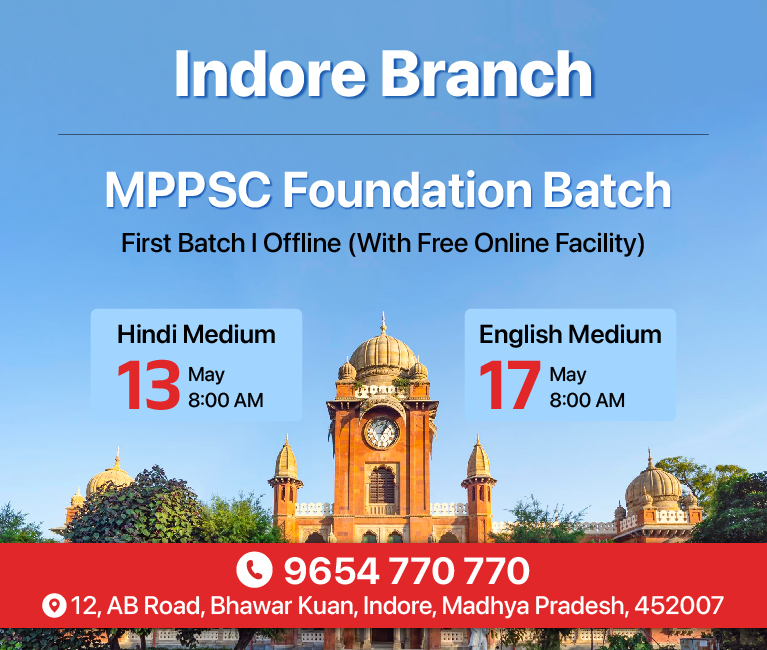
Important Facts For Prelims
PayU Gets Approval as Payment Aggregator
Why in News?
Fintech firm PayU has recently announced that it has received in-principle approval from the Reserve Bank of India (RBI) to operate as a payment aggregator (PA), under the Payment and Settlement Systems(PSS) Act, 2007.
- The in-principle approval from RBI permits PayU to onboard new merchants, yet final approval typically takes six months to a year.
What is a Payment Aggregator?
- About:
- PA acts as an intermediary between businesses and financial institutions, handling payment processing on behalf of merchants.
- A payment aggregator simplifies the process of accepting electronic payments for businesses.
- Payment aggregators streamline the payment acceptance process, allowing businesses to avoid the complexities of establishing direct relationships with financial entities.
- They enable businesses to accept various payment methods, including credit cards, debit cards, e-wallets, and bank transfers, through a single platform.
- Some examples of payment aggregators include Google Pay, Amazon Pay, Phone pe, and PayPal.
- PA acts as an intermediary between businesses and financial institutions, handling payment processing on behalf of merchants.
- Capital Requirements:
- New PAs must have a minimum net worth of Rs 15 crore at the time of application and reach Rs 25 crore by the end of the third financial year post-authorisation.
- Authorisation Process:
- While banks provide PA services as part of their normal banking relationship and do not require separate authorisation, non-bank PAs must obtain authorisation from the RBI under the Payment and Settlement Systems Act, 2007 (PSS).
- Settlement and Escrow Account Management:
- Non-bank PAs are mandated to maintain funds collected in an escrow account with a scheduled commercial bank.
- PAs must adhere to specific timelines for settling funds with merchants based on the transaction lifecycle and agreed-upon terms.
- Non-bank PAs are mandated to maintain funds collected in an escrow account with a scheduled commercial bank.
Note:
- Unlike PAs, Payment Gateways (PG) provide technology infrastructure to route and facilitate the processing of online payment transactions without handling funds.
- Payment Aggregators, on the other hand, allow merchants to have multiple payment options on their portal, covering the functionality of a payment gateway.
| Basis of Distinction | Payment Gateway | Payment Aggregator |
| Role | A network bridging the gap between the merchant and the bank. | A solution streamlining end-to-end payment processes. |
| Payment Options | Primarily debit/credit card payments. | Offers multiple options: UPI, debit/credit cards, net banking, etc. |
| Integration | Merchants integrate each payment method or bank separately. | Integration requires partnering with just one service provider. |
| Services Provided | Transaction processing services. | Provides transaction processing along with additional services like access to reports, customer support, etc. |
| Funds Handling | Does not store funds; securely transmits encrypted payment data. | Handles funds through its Merchant Identification Number (MID). Transactions processed through the aggregator's system. |
| Examples | Axis Bank, HDFC Bank, MPGS (Mastercard Payment Gateways). | PhonePe PG, Stripe, Cashfree. |
Payment and Settlement Systems (PSS) Act, 2007
- The PSS Act, 2007, provides for the regulation and supervision of payment systems in India and designates the RBI as the authority for that purpose and all related matters.
- The Reserve Bank is authorised under the Act to constitute a Committee of its Central Board known as the Board for Regulation and Supervision of Payment and Settlement Systems (BPSS), to exercise its powers and perform its functions and discharge its duties under this statute.
- According to Section 4 of the PSS Act, 2007, only the Reserve Bank can authorise the operation of a payment system. Any person wanting to operate a payment system must apply for authorization under Section 5 of the PSS Act, 2007.
- The PSS Act 2007 does not prohibit foreign entities from operating a payment system in India. The Act does not discriminate/differentiate between foreign entities and domestic entities.
- Operating a payment system without authorization, non-compliance with Reserve Bank directions, or violating any provisions of the PSS Act, 2007 can result in criminal prosecution initiated by the Reserve Bank.
UPSC Civil Services Examination, Previous Year Question (PYQ)
Prelims
Q1. With reference to digital payments, consider the following statements: (2018)
- BHIM app allows the user to transfer money to anyone with a UPI-enabled bank account.
- While a chip-pin debit card has four factors of authentication, BHIM app has only two factors of authentication.
Which of the statements given above is/are correct?
(a) 1 only
(b) 2 only
(c) Both 1 and 2
(d) Neither 1 nor 2
Ans: (a)
Q2. Which of the following is a most likely consequence of implementing the ‘Unified Payments Interface (UPI)’? (2017)
(a) Mobile wallets will not be necessary for online payments.
(b) Digital currency will totally replace the physical currency in about two decades.
(c) FDI inflows will drastically increase.
(d) Direct transfer of subsidies to poor people will become very effective.
Ans: (a)
Q3. Consider the following statements: (2017)
- National Payments Corporation of India (NPCI) helps in promoting the financial inclusion in the country.
- NPCI has launched RuPay, a card payment scheme.
Which of the statements given above is/are correct?
(a) 1 only
(b) 2 only
(c) Both 1 and 2
(d) Neither 1 nor 2
Ans: (c)

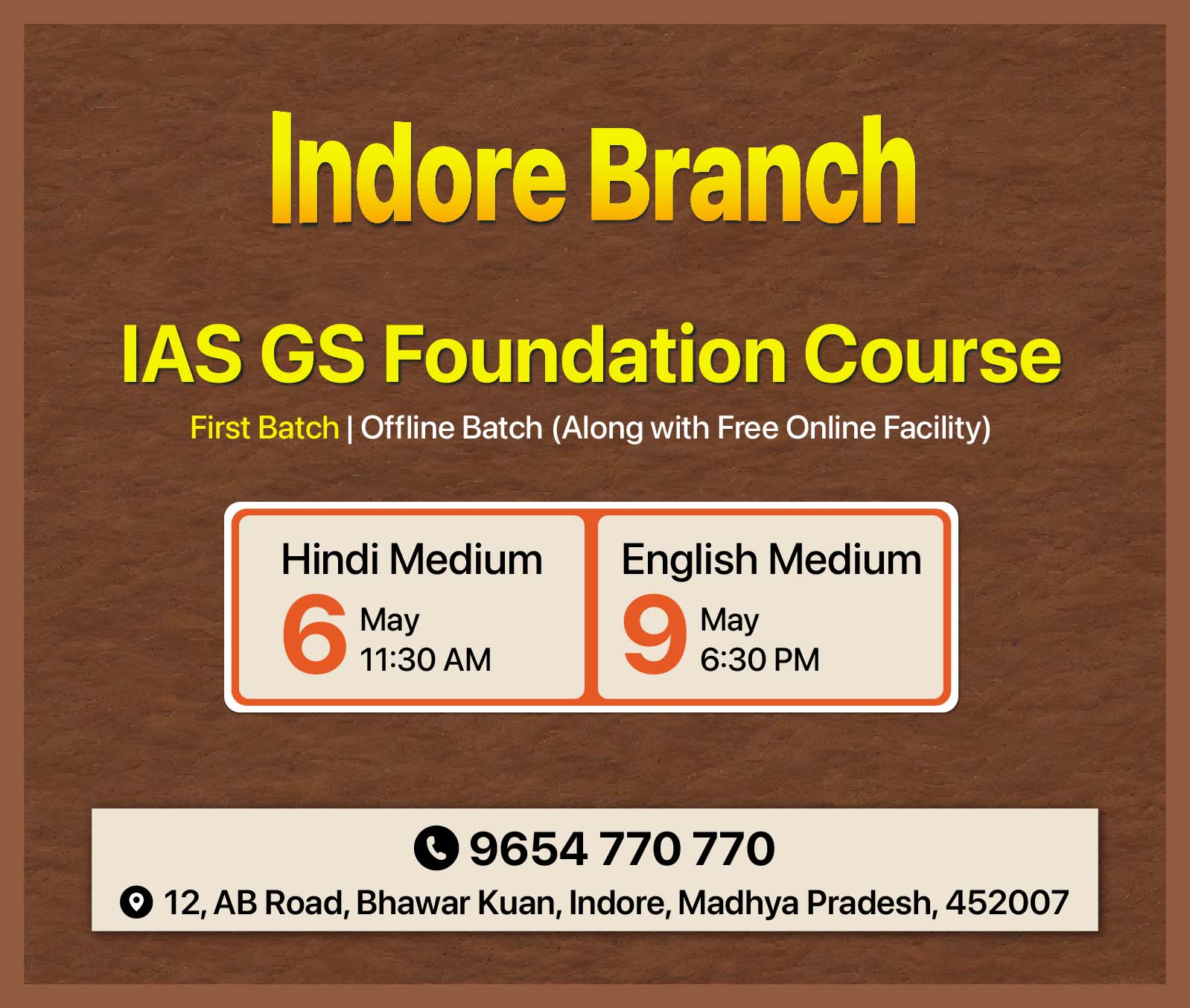
Important Facts For Prelims
DURGA II Laser Weapon
Why in News?
Recently, the Defence Research and Development Organisation (DRDO) has sought USD 100 million from the Ministry of Defence to develop a high-power laser weapon, named Directionally Unrestricted Ray-Gun Array (DURGA) II, a lightweight directed energy weapon (DEW).
- It is a 100-kilowatt lightweight DEW and can be used by armed forces.
- It aims to provide the Indian armed forces with cutting-edge technology capable of neutralising various threats, including drones, missiles, and artillery shells.
What are Directed-Energy Weapons (DEWs)?
- About:
- It is a type of weapon system that emits highly focused energy, typically in the form of lasers, microwaves, or particle beams, to incapacitate or destroy targets.
- Unlike traditional firearms or explosives which rely on kinetic energy (physical impact), DEWs use directed energy to achieve their effects.
- Types:
- Laser Weapons: It uses a concentrated beam of coherent light to heat and damage the target.
- They can be used for various purposes, including target destruction, missile defence, and disabling electronics.
- Microwave Weapons: They emit electromagnetic radiation in the microwave frequency range to disrupt or damage electronic systems, such as computers, sensors, or communication devices.
- Particle Beam Weapons: They accelerate charged or neutral particles to high velocities and direct them towards the target to cause damage through kinetic energy transfer or ionisation effects.
- Laser Weapons: It uses a concentrated beam of coherent light to heat and damage the target.
- Advantages:
- It has advantages including precision targeting, rapid engagement, reduced collateral damage, and potentially lower costs per shot.
- DEWs are believed to be the sole answer to virtually 'unstoppable' hypersonic missiles.
- They have applications in military defence, homeland security, space exploration, and law enforcement.
- It transmits lethal force at the speed of light.
- These weapons are not affected by the constraining effects of gravity or atmospheric drag, making them extremely precise.
- It has advantages including precision targeting, rapid engagement, reduced collateral damage, and potentially lower costs per shot.
- Challenges:
- Limited Range: Most DEWs have limited range, and their effectiveness decreases with increasing distance between the target and the weapon.
- High Cost: It can be expensive to develop and manufacture, and the cost may not be justified by their effectiveness in some situations.
- Countermeasures: It can be countered by using reflective materials which can reduce their effectiveness.
- Its effectiveness can be influenced by factors such as atmospheric conditions, including fog, rain, and dust.
- Arms Race: The development of DEWs may lead to an arms race among nations.
- Examples such as the current nuclear race among nations.
- Significance for India:
- The application of this technology in the defence industry can transform the way wars will be fought enabling India to produce cutting-edge platforms, weapons, sensors, and networks essential to fight and win a future war.
- DEWs could act as a deterrent against hostile nations such as China, and Pakistan by increasing India’s defence capabilities.
- Other Countries with DEWs:
- Russia, France, Germany, the United Kingdom, Israel, and China are reportedly among the countries that have programmed to develop DEWs or Laser Directed Energy Weapons.
- Earlier, the US also accused Cuba of carrying out sonic attacks (Havana Syndrome).
Note:
- The global DEW market was worth USD 4.1 billion in 2020 and is forecasted to reach USD 15.5 billion by 2027, with a CAGR of 19.63%.
UPSC Civil Service Examination, Previous Year Questions(PYQs)
Prelims:
Q1. With reference to Agni-IV Missile, which of the following statements is/are correct? (2014)
- It is a surface-to-surface missile.
- It is fuelled by liquid propellant only.
- It can deliver one-tonne nuclear warheads about 7500 km away.
Select the correct answer using the code given below:
(a) 1 only
(b) 2 and 3 only
(c) 1 and 3 only
(d) 1, 2 and 3
Ans: (a)
Q2. What is “Terminal High Altitude Area Defense (THAAD)”, sometimes seen in the news? (2018)
(a) An Israeli radar system
(b) India’s indigenous anti-missile programme
(c) An American anti-missile system
(d) A defence collaboration between Japan and South Korea.
Ans: c


Important Facts For Prelims
Virtual Private Network
Why in News?
Russia's tightening grip on online content in recent years has led to a significant surge in Virtual Private Network (VPN) usage among citizens seeking unrestricted access to information and media platforms.
What is a VPN?
- About: A VPN is a technology that establishes a secure and private connection between a user's device and the internet. VPNs encrypt the internet traffic and disguise the user’s online identity.
- VPNs can bypass geo-restrictions and censorship. By connecting to a VPN server in a different location, users can access content and websites that may be restricted or blocked in their region.
- Mechanism:
- Encryption: When a user connects to a VPN, all data transmitted and received is encrypted.
- Encryption converts data into a code that only the user's device and the VPN server can decipher using a decryption key.
- Secure Tunneling: Encrypted data travels through a secure tunnel to the VPN server.
- This tunnel prevents unauthorised parties like Internet Service Providers (ISP), hackers or government agencies from intercepting or monitoring the user's online activities.
- IP Address Masking: The user's real IP address, which can reveal their location and device information, is replaced with the IP address of the VPN server.
- This masking process enhances user privacy and makes it difficult for websites to track the user's actual location.
- Encryption: When a user connects to a VPN, all data transmitted and received is encrypted.
What are Other Key Technologies Similar to VPN?
- Smart Domain Name System (DNS): It provides a proxy server resource for additional protection of a user's identity by masking a user's ISP-generated DNS address with a different address, generated by the Smart DNS device, before sending the user request to the internet.
- The Onion Router: It protects user data by encapsulating the data in multiple layers of secure encryption, using the Onion Protocol, as it routes the data from sender to receiver.
- The process ensures that a user's identity is protected from ISPs and advertisers.
- Proxy Servers: Proxy servers act as intermediaries between a user's device and the internet.
- They can be used to hide the user's IP address, bypass content filters, and improve speed by caching frequently accessed web pages.
Note:
- In 2022, the Indian Ministry of Electronics and Information Technology introduced regulations mandating VPN providers, data centres, virtual service networks, and cloud providers to record users' personal details for five years.
- They must also log usage patterns, and service purposes, and report cybersecurity incidents to CERT-In within six hours.
UPSC Civil Services Examination, Previous Year Question
Q. What is “Virtual Private Network”? (2011)
(a) It is a private computer network of an organization where the remote users can transmit encrypted information through the server of the organization.
(b) It is a computer network across a public internet that provides users access to their organization’s network while maintaining the security of the information transmitted.
(c) It is a computer network in which users can access a shared pool of computing resources through a service provider.
(d) None of the statements (a), (b) and (c) given above is a correct description of Virtual Private Network.
Ans: (b)
Rapid Fire
Bogota's Water Rationing Crisis
Bogota (capital of Colombia) recently commenced water rationing due to dwindling reservoir levels.
- The crisis underscores the critical need for prioritising land management and adapting to evolving climate realities.
- While the recent El Nino phase's impact has strained resources, including potable water and energy, collaborative measures and conservation remain imperative to mitigate future risks and ensure sustainable resource management.
- Bogota is one of the highest capital cities in the world located on a plateau in the Andes known as the Altiplano Cundiboyacense.


Rapid Fire
Exoskeleton Technology
Bengaluru hosted the inaugural international workshop on 'Emerging Technologies & Challenges for Exoskeleton' organised by the Defence Research & Development Organisation (DRDO) on 15th April 2024.
- Exoskeletons are wearable devices designed to facilitate fundamental human actions and used in a diverse range of fields such as Medical, Military, Rescue, operations, Industrial and Consumer uses.
- In the medical field, these are used in occupational therapy, augmentation and rehabilitation medicine to help people who have suffered some kind of accident and need to walk or function normally again.
- Paediatric exoskeletons are designed for children with mobility problems, such as those affected by spinal muscular atrophy (SMA), Spinal cord injuries, Cerebral palsy, Muscle atrophy and Muscular dystrophy.
- In the medical field, these are used in occupational therapy, augmentation and rehabilitation medicine to help people who have suffered some kind of accident and need to walk or function normally again.
- There are numerous industrial applications, including assisting workers who undertake repetitive tasks such as paint spraying, welding, assembly line material handling etc.
- Exoskeletons are used in the military, as they help to reduce the physical burden on soldiers, and augment their strength for walking long distances.
- They can be used to help pre-fighters and other rescue workers survive dangerous environments.
Read More: Policy Watch: Robotics and Automation in India


Rapid Fire
Miyawaki Method
Recently, the Embassy of Israel in India, in collaboration with a non-profit entity, has officially joined the 'Million Miyawaki' project as a part of the Earth Day celebration.
- Under this project, efforts are made at planting a million trees in Delhi-NCR by creating 'forest-like' Miyawaki plantations of 600 trees each, with a variety of up to 30 different locally sourced species like Anjan, Amala, Bel, Arjun and Gunj.
- It was named after Japanese botanist Akira Miyawaki, this method involves planting two to four different types of indigenous trees within every square meter.
- This method rapidly increases green cover on small plots by promoting self-sustaining tree growth to full maturity within three years, eliminating the need for regular maintenance.
- The dense green cover of indigenous trees plays a key role in absorbing the dust particles of the area where the garden has been set up. The plants also help in regulating surface temperature.
- Earth Day is celebrated on 22nd April every year as an international event around the world to pledge support for environmental protection.
Read More: Miyawaki Plantation Method

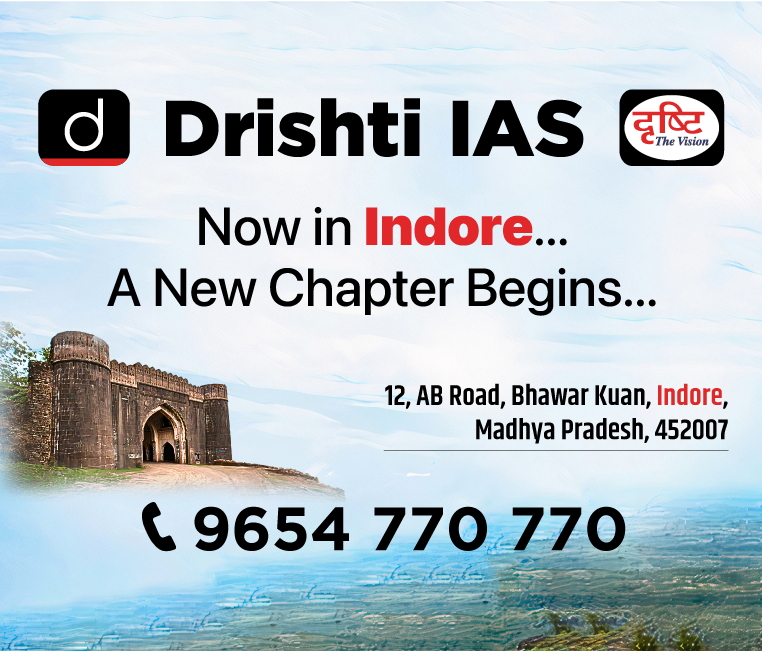
Rapid Fire
India's Forex Reserves Drop
India's forex reserves fell by USD 2.282 billion to USD 640.334 billion in the week ending 19th April 2024, as per the Reserve Bank of India (RBI).
- Components of Reserves:
- Foreign currency assets decreased by USD 3.793 billion to USD 560.86 billion.
- Gold reserves increased by USD 1.01 billion to USD 56.808 billion.
- Special Drawing Rights (SDRs) decreased by USD 43 million to USD 18.034 billion.
- Reserve position with the International Monetary Fund (IMF) declined by USD 2 million to USD 4.631 billion.
- Factors Influencing Decline:
- This decrease was primarily attributed to strategic interventions by the central bank, which deployed the reserves to defend the rupee amidst economic uncertainties and currency depreciation.
- The RBI intervenes in the market to manage liquidity, including selling dollars to prevent sharp rupee depreciation and prevent excessive volatility in the exchange rate.
- It can be noted that in April 2024, India's forex kitty had reached an all-time high of USD 645.6 billion.
Read more: Decline in Forex Reserves


Rapid Fire
Raja Ravi Varma's Indulekha
- Recently, amidst celebrations marking the 176th birth anniversary of renowned artist Raja Ravi Varma (29th April 1848), the unveiling of the first true copy of his iconic painting "Indulekha" is set to take place at Kilimanoor Palace, Travancore, the artist's birthplace.
- Indulekha, a portrayal of the protagonist from O. Chandu Menon's seminal Malayalam novel, holds cultural and literary significance as a symbol of early modern literature in the region.
- The unreleased painting of Indulekha garnered attention upon its emergence into the public domain in 2022.
- Raja Ravi Varma is considered the father of modern Indian art, as he combined Indian iconography with Western realism. His influence is seen in diverse fields such as art, literature, advertising, textiles, and comic books.
- Raja Ravi Varma, born into an aristocratic family in Kerala, started his professional art career at 22 and mastered oil painting.
- Varma was among the first Indian artists to use oil paints and is considered a representative of the Europeanised school of painting in India.
- Varma built his reputation through royal patronage, he received significant commissions from Maharana Fateh Singh and Sayajirao Gaekwad III.
- Works: Damayanti Talking to a Swan, Shakuntala Looking for Dushyanta, Nair Lady Adorning Her Hair, and Shantanu and Matsyagandha.
- Recognition: Kaiser-i-Hind Gold Medal by the British colonial government in 1904 and in 2013, a crater on the planet Mercury was named in his honour.
Read more: Raja Ravi Varma


Rapid Fire
India's Outward FDI Trends
India's outward foreign direct investment (OFDI) experienced a notable decline of 39% to USD 28.64 billion in the fiscal year ending March 2024, reflecting the impact of uncertain global economic conditions.
- The decline is primarily attributed to reduced commitments in both equity and loan routes. The decrease in overseas acquisitions by Indian firms also played a role in this decline.
- However, March 2024 witnessed a surge in outward FDI, reaching USD 3.92 billion, with equity commitments at USD 2.03 billion, the highest for the year.
- This rebound indicates potential opportunities emerging amidst the challenging global economic landscape, highlighting the dynamic nature of India's outward FDI trends.
- Outward direct investment is a business strategy where a company based in one country (home country) invests in a business entity (foreign affiliate) located in another country (host country).
- This investment goes beyond simply buying stocks or bonds; it involves establishing a controlling interest or significant influence in the foreign company.
Read more: India's Outward and Inward Investment Trends







